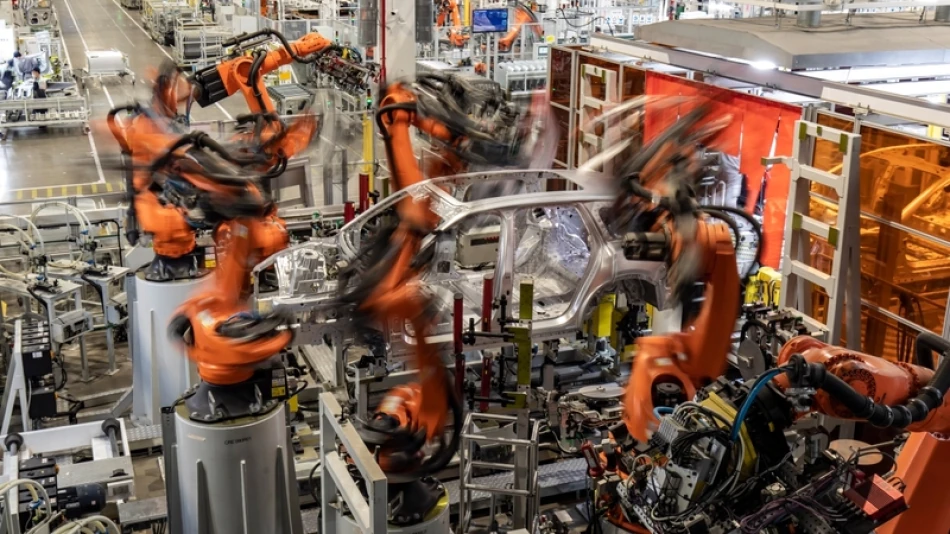
China Dominates the Global Industrial Robotics Race
China now operates more industrial robots than the rest of the world combined. The country installed around 300,000 new robots in its factories last year alone — more than all other nations put together. With over 2 million robots now working in Chinese manufacturing, this surge places China well ahead in the global race for industrial automation.
The numbers show just how dramatic this shift has been. The US operates only 34,000 industrial robots across all its factories. That means China has five times more robots than America, highlighting a massive gap in manufacturing automation between the two economic powers.
This wasn't an accident. Since 2015, China made robotics a key part of its "Made in China 2025" strategy. The government backed this push with low-interest loans from state banks, funding for companies to buy foreign competitors, and direct financial support. Chinese factories have been installing more than 150,000 robots annually since 2017.
The results speak for themselves. China now produces one-third of all manufactured goods globally — more than the US, Germany, Japan, South Korea, and the UK combined. Meanwhile, major industrial powers saw their robot installations drop last year. Japan, once the leader in this space, installed just 44,000 robots.
China's market share in industrial robotics jumped from 25% in 2023 to 33% now. Japan's share fell from 38% to 29% in the same period. "You can see how successful this strategy has been," says Susanne Bieller from the International Federation of Robotics. "Without a clear strategy, countries always lag behind."
The government support created an entire ecosystem for robot manufacturing. Chinese companies now make specialized components like robotic joints that were once imported. This has driven down costs significantly. Unitree Robotics, a startup in Hangzhou, sells humanoid robots for around $6,000 — much cheaper than robots from Boston Dynamics.
But China still faces some gaps. The country struggles with certain sensors and semiconductors needed for advanced humanoid robots. Germany and Japan still lead in these high-end components. There's also a growing shortage of skilled technicians and programmers who can design and install these systems. Their salaries have risen to nearly $60,000 annually.
For global manufacturers and investors, China's robot dominance changes the competitive landscape. Companies operating in China can access cheaper automation technology and a growing pool of robot suppliers. But manufacturers in other countries may find themselves at a cost disadvantage as Chinese factories become more efficient through automation.
The broader economic implications are significant. As China automates its manufacturing at this pace, it can maintain its position as the world's factory floor even as labor costs rise. Other countries will need their own strategies to compete in an increasingly automated global economy.
Most Viewed News

 Sara Khaled
Sara Khaled






